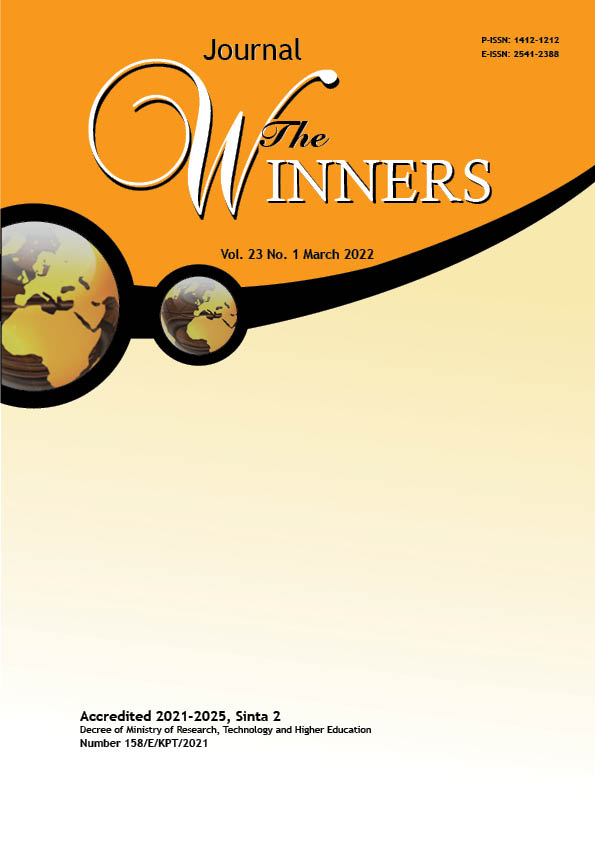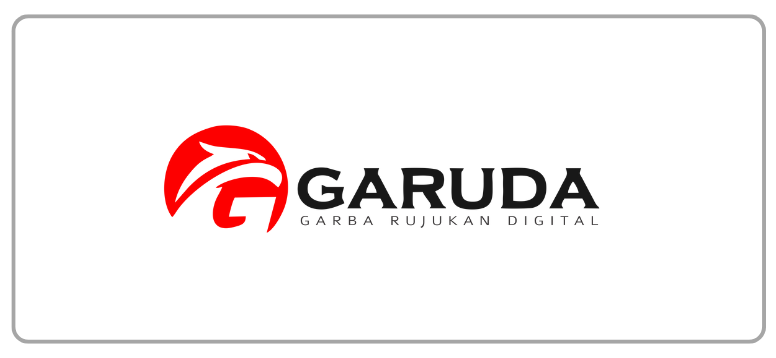In-Store Marketing Strategies towards Customer Attitude to Private Label Brands using Cue Utilization Theory
DOI:
https://doi.org/10.21512/tw.v23i1.7091Keywords:
marketing strategies, private label brand, private label attitude, cue utilization theory, HypermartAbstract
The research aimed to find out instore marketing strategies that can influence consumer attitudes towards private label brands based on “cue utilization theoryâ€. The research belonged to the category of explanatory research since it uses primary data with the population of consumers who have shopped for private label products in Hypermart Tanjungpinang, and sample as many as 174 respondents with convenience sampling techniques. The analysis approach uses partial least square-structural equation modeling (PLS-SEM). The results show that private label marketing has a positive and significant effect on private label attitudes; private label marketing and store environment positively and significantly influence private label attitudes through the mediation role of perceived quality variants; product relatedÂ
attributes have a positive and significant influence on private label attitudes; the national brand promotion attitudes does not moderate the relationship between private label marketing and perceived quality variants on private label attitude; and price consciousness does not moderate the relationship between private label marketing and perceived quality variants on private label attitudes.Â
References
Abril, C. & Rodriguez, C. B. (2016). Marketing mix effects on private labels brand equity. European Journal of Management and Business Economics, 25(3), 168-175. https://doi.org/10.1016/j.redeen.2016.09.003
Alic, A., Cinjarevik, M., & Agic, E. (2020). The role of brand image in consumer brand relationships: similarities and differences between national and private label brands. Journal Management and Marketing, 15(1), 1-16.
Baker, J., Parasuraman, A., Grewal, D., & Voss, G. (2002). The influence of multiple store environment cues on perceived merchandise value and patronage intentions. Journal of Marketing, 66(2), 120-141. https://doi.org/10.1509%2Fjmkg.66.2.120.18470
Batra, R. & Sinha, I. (2000). Consumer level factors moderating the success of private label brands. Journal of Retailing and Consumer Services, 76(2), 175-191. https://doi.org/10.1016/S0022-4359(00)00027-0
Diallo, M. F. & Siqueira, J. R. (2017). How previous positive experiences with store brands affect purchase intention in emerging countries: A comparison between Brazil and Colombia. International Marketing Review, 3(4). https://doi.org/10.1108/IMR-07-2014-0224
Hair, J. J., Tomas G, M., Ringle M, C., & Sarstedt, M. (2017). A Primer on Partial Least Squares: Structural Equation Modelling (PLS-SEM) (2nd Ed.). SAGE Publications. Inc.
Hashmi, H. B., Shu, C., & Haider, S. (2020). Moderating effect of hedonism on store environment impulse buying nexus. International Journal of Retail & Distribution Management, 48(5), 465-483. https://doi.org/10.1108/IJRDM-09-2019-0312
Jacqueline, J., Kacena, J. D., & Hessa, D. W. (2012). Spontaneous selection: The influence of product and retailing factors on consumer impulse purchases. Journal of Retailing and Consumer Services, 19, 578-588. http://dx.doi.org/10.1016/j.jretconser.2012.07.003
Johnen, M. & Schnittka, O. (2019). When pushing back is good: the effectiveness of brand responses to social media complaints. Journal of the Academy of Marketing Science, 47(5), 858-878. https://doi.org/10.1007/s11747-019-00661-x
Katt, F. & Meixner, O. (2020). Is it all about the price? An Analysis of the Purchase Intention for Organic Food in a Discount Setting by Means of Structural Equation Modeling. Foods, 9(4), 458. https://doi.org/10.3390/foods9040458
Kim, S., Lee, S., Lee, J. H., & Taylor, C. R. (2019). Can premium private labels compete with luxury brands: the impact of advertising on perceived luxuriousness. International Journal of Advertising, 39(6), 761-782. https://doi.org/10.1080/02650487.2018.1535222
Konuk, F. . (2018). The role of store image, perceived quality, trust and perceived value in predicting consumers’ purchase intentions towards organic private label food. Journal Retailing Consumer Service, 43, 304-310.
Kotler, P., & Keller, K. L. (2016). Marketing Management. In Boletin cultural e informativo Consejo General de Colegios Medicos de España.
Kukar-Kinney, M. & Xia, L. (2017). The effectiveness of number of deals purchased in influencing consumers’ response to daily deal promotions: a cue utilisation approach. Journal of Business Research, 79, 189-197. https://doi.org/10.1016/j.jbusres.2017.06.012
Kumar, S. & Candra, B. (2020). Consumer purchase intention towards private label brands of virtual retailers: Evidence from a developing nation. International Journal of Electronic Marketing and Retailing, 11(2). https://doi.org/10.1504/IJEMR.2020.106843
Manzur, E., Olavarrieta, S., Hidalgo, P., Farıas, P., & Uribe, R. (2011). Store brand and national brand promotion attitudes antecedents. Journal of Business Research, 64(3), 286-291. https://psycnet.apa.org/doi/10.1016/j.jbusres.2009.11.014
Mishra, S., Malhotra, G., & Garima, S. (2020). In-store marketing of private labels: applying cue utilisation theory. International Journal of Retail & Distribution Management, 47(1). https://doi.org/10.1108/IJRDM-04-2020-0152
Mostafa, R. H. A. & Elseidi, R. I. (2018). Factors affecting consumers willingness to buy private label brands (PLBs): Applied study on hypermarkets. Spanish Journal of Marketing, 22(3), 338-358. https://doi.org/10.1108/SJME-07-2018-0034
Mowrey, C., Parikh, P., & Kevin, R. (2019). The impact of rack layout on visual experience in a retail store. Flexible Services and Manufacturing Journal, 32(4). https://doi.org/10.1007/s10696-019-09368-1
Mukherji, J. (2017). Consumer confidence and private label usage: Exploring the role of quality and price consciousness. Journal of Competitiveness Studies, 25(3-4), 188-299.
Muruganantham, G. & Priyadharshini, K. (2017). Antecedents and consequences of private brand purchase: A systematic review and a conceptual framework. International Journal of Retail & Distribution Management, 45(6), https://doi.org/10.1108/IJRDM-02-2016-0025%0D
Nicole, C. L., Marcon, A., Ribeiro, J. L. D., Medeiros, J. F. de, Brião, V. B., & Antoni, V. L. (2020). Determinant attributes and the compensatory judgement rules applied by young consumers to purchase environmentally sustainable food products. Sustainable Production and Consumption, 23, 256-273. https://doi.org/10.1016/j.spc.2020.06.003
Olbrich, R., Hundt, H. C., & Jansen, M. (2017). Effects of pricing strategies and product quality on private labeland national brand performance. Journal of Retailing and Consumer Services, 34, 394-301. https://doi.org/10.1016/j.jretconser.2016.01.012
Sabri, O., Van Doan, H., Malek, F., & Bachouche, H. (2020). When is transparent packaging beneficial. International Journal of Retail and Distribution Management, 48(8), 781-801. https://doi.org/10.1108/ijrdm-03-2019-0097
Sarkar, S., Sharma, D., & Kalro, A. D. (2016). Private label brands in an emerging economy: An exploratory study in India. International Journal of Retail and Distribution Management, 44(2), 202-222.
Sekaran, U. & Bougie, R. (2016). Research Methods for Business: A Skill Building Approach (7th Ed.). West Sussex: Wiley & Sons.
Wang, J., Tao, J., & Chu, M. (2020). Behind the label: Chinese consumers trust in food certification and the effect of perceived quality on purchase intention. Food Control, 108. https://doi.org/10.1016/j.foodcont.2019.106825
Xiao, L., Guo, F., Yu, F., & Shengnan, L. (2019). The effects of online shopping context cues on consumers purchase intention for cross-border e-commerce sustainability. Journal Sustainability, 11(10), 2777. https://doi.org/10.3390/su11102777
Downloads
Published
How to Cite
Issue
Section
License
Copyright (c) 2022 Ronaldo Yolanda Putra, Syifa Nurul Fadillah

This work is licensed under a Creative Commons Attribution-ShareAlike 4.0 International License.
Authors who publish with this journal agree to the following terms:
a. Authors retain copyright and grant the journal right of first publication with the work simultaneously licensed under a Creative Commons Attribution License - Share Alike that allows others to share the work with an acknowledgment of the work's authorship and initial publication in this journal.
b. Authors are able to enter into separate, additional contractual arrangements for the non-exclusive distribution of the journal's published version of the work (e.g., post it to an institutional repository or publish it in a book), with an acknowledgment of its initial publication in this journal.
c. Authors are permitted and encouraged to post their work online (e.g., in institutional repositories or on their website) prior to and during the submission process, as it can lead to productive exchanges, as well as earlier and greater citation of published work.
USER RIGHTS
All articles published Open Access will be immediately and permanently free for everyone to read and download. We are continuously working with our author communities to select the best choice of license options, currently being defined for this journal as follows: Creative Commons Attribution-Share Alike (CC BY-SA)

















